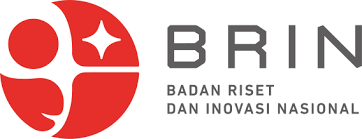Utilization of Information and Communication Technology-Based Learning Media
DOI:
https://doi.org/10.58355/manajia.v3i2.45Keywords:
Utilization, Learning, TechnologyAbstract
Educational success can be achieved through a continuous and harmonious educational process. However, due to the current state of the world being hit by a disaster in the form of the Covid-19 virus pandemic, all lines of activity including education must be hampered and must be diverted by utilizing ICT media to carry out the learning process. The ICT media is e-learning. The use of e-learning itself has various disadvantages and various obstacles but also has advantages. To deal with problems related to the disadvantages of using e-learning, various examples of solutions have been mentioned in this article. Various media can be used as tools for online learning or e-learning, for example, zoom, google meet and so on. The use of this ICT media is very much needed and must be carried out during this time, namely by carrying out a distance learning process. The objectives of this study are 1) To identify how the learning system is during the COVID-19 pandemic, 2) To find out how the implementation of online learning during the COVID-19 pandemic is in SIKL, and 3) To find out the advantages and disadvantages of online learning during the COVID-19 pandemic in SIKL. This study uses a qualitative method, the research subjects are teachers and principals. Data collection through documentation and interviews in the implementation of the KKL International Virtual Fieldwork Study at the Indonesian School Kuala Lumpur organized by the State Islamic Institute of Kudus (IAIN Kudus). The results of the study indicate that online learning is carried out as an effort to study at home (BDR) to break the spread of COVID-19 requiring teacher creativity and parental guidance, the implementation of online learning in SIKL is realized in the form of a digital system such as a blueprint, superior programs and feedback reports from parents, online learning in SIKL has advantages in terms of implementing a digital system, superior programs, and feedback reports from parents and has disadvantages in terms of limited internet access and student boredom in learning. It is concluded that the community only utilizes information and communication technology to continue carrying out activities because the facilities and features of only information and communication technology have advantages and are easy to use by various groups of people. The results of this study are that students and children of vocational schools and junior high schools can utilize technology independently to facilitate a more effective and efficient learning process.
Downloads
References
Arinie Falhah, Rizqi Fadli, & Didik Himmawan. (2025). Utilization of Google Meet Application to Improve Interaction Between Lecturers and Students in Learning at BKPI Students, Wiralodra University, Indramayu. Al-Ard: Journal of Education, 1(1), 35–42. Retrieved from https://al-ard.kjii.org/index.php/i/article/view/6
Arip Wibowo, Didik Himmawan, & Muhammad Zidan M. (2025). The Effectiveness of Using Google Classroom in Learning Islamic Religious Education Subjects at SMAN 1 Sliyeg. Ilmu Al-Nafs: Journal of Psychology, Counseling and Education, 1(1), 22–27. Retrieved from https://ilmual-nafs.kjii.org/index.php/i/article/view/1
Didik Himmawan, Amaliana Rahayu, Leni Nur’aeni, & Fikra Fadillah FM. (2024). Using TikTok as an English Learning Media in the English Language Education Study Program at Wiralodra Indramayu University. Manajia: Journal of Education and Management, 2(2), 36–41. https://doi.org/10.58355/manajia.v2i2.24
Didik Himmawan, Mohamad Wildan Soferino, Rindi Ariyani, & Kahfiyah Rasiyani Eka Jayati. (2024). The Phenomenon of Artificial Intelligence (AI) Dependence in an Islamic Perspective on Adolescents. Diplomasi : Jurnal Demokrasi, Pemerintahan Dan Pemberdayaan Masyarakat, 2(4), 155–164. https://doi.org/10.58355/dpl.v2i4.27
Didik Himmawan, Nur Izzatun Fauzi, & Nanang Priono. (2025). Multimedia Based E-Learning Development for The Effectiveness of Distance Learning. Al-Ard: Journal of Education, 1(1), 1–8. Retrieved from https://al-ard.kjii.org/index.php/i/article/view/1
Hasanatul Fitri, Didik Himmawan, Hana Wulandari, & Indah Ardianti. (2024). Internet Connection Obstacles in General Speaking Courses and Their Influence on Learning Effectiveness. Manajia: Journal of Education and Management, 2(2), 28–35. https://doi.org/10.58355/manajia.v2i2.21
https://sevima.com/pemanfaatan-teknologi-informasi-dalam-pendidikan-masa-kini/)
Linmasya Syafa’atun Nurjannah, & Didik Himmawan. (2025). Implementation of E-Learning in Schools to Improve Student Skills. Ilmu Al-Nafs: Journal of Psychology, Counseling and Education, 1(1), 35–43. Retrieved from https://ilmual-nafs.kjii.org/index.php/i/article/view/4
Muhammad Bihar Isyqi, & Didik Himmawan. (2025). The Use of E-Mail and Google Drive by Islamic Religious Education Students at Wiralodra University Indramayu for the 2023/2024 Academic Year. Ilmu Al-Nafs: Journal of Psychology, Counseling and Education, 1(1), 1–11. Retrieved from https://ilmual-nafs.kjii.org/index.php/i/article/view/5
Downloads
Published
How to Cite
Issue
Section
License
Copyright (c) 2025 Siska Kinasih, Didik Himmawan, M Siswandi, Putri Nurul Fitri, Hanif Fachri Ramadhan

This work is licensed under a Creative Commons Attribution 4.0 International License.








